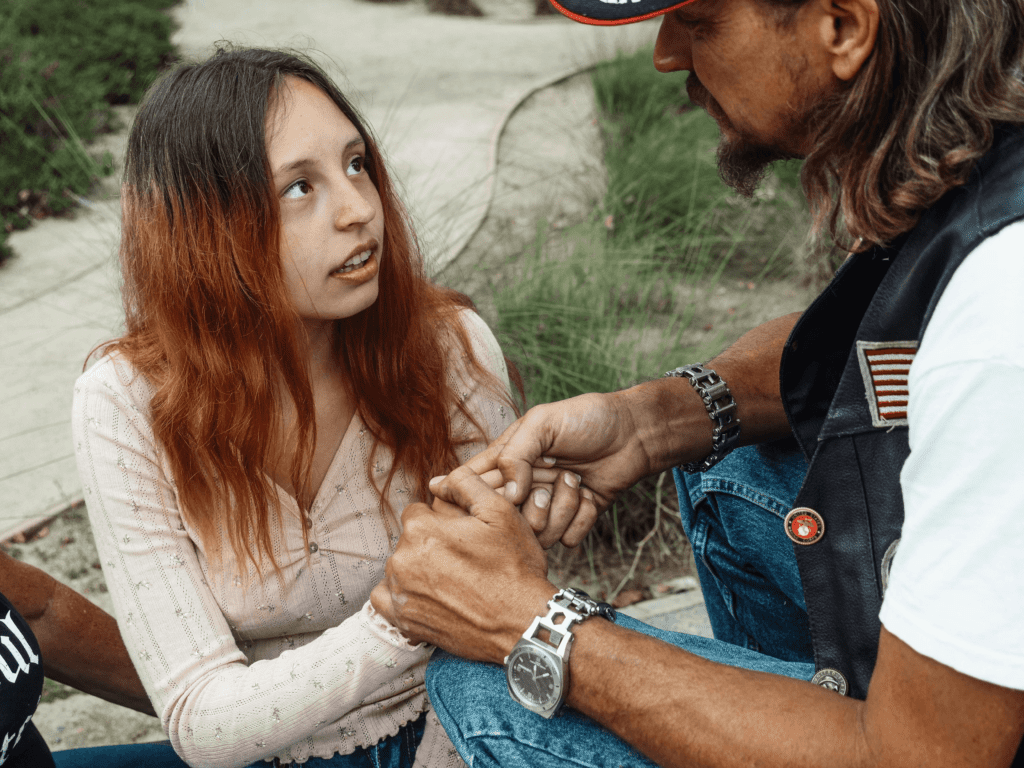Last updated on December 18th, 2024 at 03:19 am
- 1. The Psychology of Enabling
- 1.1 Motivations Behind Enabling
- 1.2 The Cycle of Enabling
- 2. Recognizing Signs of Enabling
- 2.1 Financial Support
- 2.2 Emotional Shielding
- 2.3 Avoidance and Denial
- 2.4 Taking on Responsibilities
- 3. The Impact of Enabling on Relationships
- 3.1 Effects on the Enabler
- 3.2 Consequences for the Enabled Individual
- 3.3 Impact on Family Dynamics
- 4. Breaking the Cycle: Strategies to Stop Enabling
- 4.1 Establishing Clear Boundaries
- 4.2 Practicing Detachment with Love
- 4.3 Encouraging Accountability
- 4.4 Seeking Support and Education
- 5. The Difference Between Helping and Enabling
- 5.1 Characteristics of Healthy Helping
- 5.2 Red Flags of Enabling
- 6. The Role of Codependency in Enabling
- 6.1 Understanding Codependency
- 6.2 Breaking Codependent Patterns
- 7. Enabling in Different Contexts
- 7.1 Enabling in the Workplace
- 7.2 Enabling in Romantic Relationships
- 7.3 Enabling in Parent-Child Relationships
- 8. The Path to Recovery: Both Sides of Enabling
- 8.1 For the Enabler
- 8.2 For the Enabled Individual
- 9. Creating a Supportive Environment for Change
- 9.1 Open Communication
- 9.2 Celebrating Progress
- 9.3 Fostering Resilience
- The Complexity of Enabler Psychology
- Types of Enablers in Relationships
- Enabler in Dysfunctional Families
- Enabler in Mental Health Contexts
- Co-Dependent Relationships and Enabling
- Enabler in Substance Use and Addiction
- Enabler in Alcoholism
- Enabler in Drug Addiction
- Enabling in Professional Settings
- Enabler in Workplace Dynamics
- Enabler Role in Mental Health and Recovery
- Breaking the Enabler Role
- Professional Treatment and Enabling Dynamics
- Engaging in 12-Step Addiction Recovery Programs
- Enabler in Parenting and Caregiving Roles
- Family Dynamics and Addiction Counseling
- Enabler in Broader Contexts
- Enabling in Friendships and Partnerships
- Treatment Centers and Enabler Transformation
- Addressing Enabling in Recovery from Addiction
- Role of Mental Health Professionals in Addressing Enabling
- Enabling in Emotional Health and Psychological Well-being
- Impact of Enabling on Emotional Distress
- Treatment Programs and Recovery Strategies
- Addiction Studies and the Importance of Breaking the Cycle
- Enabler in Support Groups and Social Work
- Importance of Family Training in Treatment Programs
- Addressing Inappropriate Behaviors in Different Contexts
- Breaking the Dysfunctional Relationship Cycle
- Enabler in Behavioral and Emotional Health
- Enabler in Self-Care and Self-Improvement
- Conclusion
- Frequently Asked Questions
- What Is An Enabler In The Context Of Addiction?
- How Does An Enabler Prevent An Addict From Facing Consequences?
- What Are The Signs Of Enabling Behavior In Codependent Relationships?
- How Does Enabling Behavior Affect Family Dynamics?
- How Is An Enabler Different From A Supporter In Substance Abuse Situations?
- What Are The Common Characteristics Of Enablers In Addiction?
- Why Is Financial Assistance A Common Form Of Enabling?
- How Does Enabling Lead To A Vicious Cycle In Addiction?
- Can An Enabler’s Behavior Impact Their Own Mental Health?
- What Role Do Enablers Play In The Cycle Of Addiction?
- What Are Examples Of Enabling Behaviors In Family Settings?
- How Can An Enabler Change Their Behavior To Help An Addict?
- How Does Enabling Influence The Mental Health Of An Addicted Child?
- What Are The Long-Term Effects Of Enabling On The Addict?
- Can Family Therapy Help Break The Cycle Of Enabling?
- How Do Enablers Justify Their Actions To Themselves?
- What Role Does Emotional Attachment Play In Enabling?
- How Does An Enabler’s Behavior Reinforce An Addict’s Negative Habit?
- Can Enabling Behavior Lead To Co-Dependent Relationships?
Enabling is a complex psychological phenomenon that can profoundly impact relationships, especially when substance abuse is involved. While often rooted in love and a desire to help, enabling behaviors can inadvertently perpetuate destructive patterns and hinder recovery.
Understanding the nuances of enabling is crucial for fostering healthier dynamics and supporting genuine healing.
1. The Psychology of Enabling
At its core, enabling stems from a misguided attempt to protect a loved one from the consequences of their actions. This behavior often develops gradually, as family members or friends try to shield the individual from pain or difficulty. However, by doing so, enablers unwittingly remove natural incentives for change.
1.1 Motivations Behind Enabling
Several factors can drive enabling behaviors:
- Fear of confrontation or conflict
- Desire to maintain family harmony
- Misplaced sense of responsibility
- Guilt or shame about the loved one’s condition
- Codependency and need for control
1.2 The Cycle of Enabling
Enabling often creates a self-perpetuating cycle:
- The enabler intervenes to “help” the individual
- The individual avoids consequences and continues problematic behavior
- The enabler feels increasingly responsible and continues to intervene
- The cycle repeats, deepening dependency and dysfunction
2. Recognizing Signs of Enabling
Identifying enabling behaviors is the first step toward breaking the cycle. While manifestations can vary, certain patterns are common across many enabling relationships.
2.1 Financial Support
Providing money or resources that indirectly support substance abuse or other destructive behaviors is a hallmark of enabling. This might include:
- Paying bills or debts accrued due to addiction
- Providing housing without expectations or boundaries
- Giving “loans” that are never repaid
2.2 Emotional Shielding
Enablers often try to protect their loved ones from emotional discomfort, inadvertently stunting personal growth:
- Making excuses for absence or poor performance
- Lying to cover up mistakes or misdeeds
- Shielding from natural consequences of actions
2.3 Avoidance and Denial
Refusing to acknowledge the severity of the problem is a common enabling tactic:
- Minimizing the impact of substance abuse
- Ignoring signs of relapse or continued use
- Refusing to discuss the issue openly
2.4 Taking on Responsibilities
Enablers often assume duties that should belong to the individual:
- Completing work or school assignments
- Managing legal or financial affairs
- Handling basic life tasks the person should manage independently


3. The Impact of Enabling on Relationships
Enabling behaviors can have far-reaching consequences on both the enabler and the enabled individual, as well as their broader social circle.
3.1 Effects on the Enabler
Those who engage in enabling often experience:
- Increased stress and anxiety
- Feelings of resentment and frustration
- Neglect of personal needs and boundaries
- Financial strain or instability
- Deterioration of other relationships
3.2 Consequences for the Enabled Individual
While initially seeming helpful, enabling ultimately harms the person it aims to protect:
- Delayed emotional maturation
- Reinforcement of destructive behaviors
- Decreased motivation to change
- Increased dependency on others
- Failure to develop coping skills
3.3 Impact on Family Dynamics
Enabling can create ripple effects throughout a family system:
- Strained relationships between family members
- Unequal treatment of siblings or relatives
- Modeling of unhealthy relationship patterns
- Creation of family secrets and shame
4. Breaking the Cycle: Strategies to Stop Enabling
Recognizing enabling behaviors is an important first step, but taking action to change these patterns is crucial for fostering healthier relationships and supporting genuine recovery.
4.1 Establishing Clear Boundaries
Setting and maintaining firm boundaries is essential:
- Clearly communicate expectations and limits
- Consistently enforce consequences for boundary violations
- Resist the urge to “rescue” from natural consequences
4.2 Practicing Detachment with Love
Learning to separate oneself emotionally while maintaining compassion is key:
- Acknowledge that you cannot control another’s choices
- Focus on your own well-being and growth
- Offer support for positive changes, not destructive behaviors


4.3 Encouraging Accountability
Promoting personal responsibility is crucial for breaking enabling patterns:
- Allow the individual to face the results of their actions
- Avoid making excuses or covering up mistakes
- Encourage problem-solving and self-reliance
4.4 Seeking Support and Education
Breaking enabling habits often requires outside help:
- Attend support groups for families affected by addiction
- Engage in individual therapy or counseling
- Learn about addiction and codependency
5. The Difference Between Helping and Enabling
Understanding the distinction between genuine assistance and enabling is crucial for fostering healthy relationships and supporting true recovery.
5.1 Characteristics of Healthy Helping
Authentic help empowers individuals to grow and change:
- Encourages independence and self-sufficiency
- Respects personal boundaries and limitations
- Offers support for positive actions and choices
- Allows for natural consequences as learning opportunities
5.2 Red Flags of Enabling
In contrast, enabling behaviors often:
- Foster dependency and stunted emotional growth
- Ignore or violate personal boundaries
- Provide support that maintains destructive patterns
- Shield from consequences, preventing learning and change
6. The Role of Codependency in Enabling
Codependency and enabling often go hand-in-hand, creating a complex web of unhealthy relationship dynamics.
6.1 Understanding Codependency
Codependency involves:
- Excessive emotional or psychological reliance on a partner
- A need to “rescue” or fix others
- Deriving self-worth from caretaking
- Difficulty setting and maintaining boundaries
6.2 Breaking Codependent Patterns
Addressing codependency is crucial for stopping enabling behaviors:
- Develop a strong sense of self-identity
- Practice self-care and prioritize personal needs
- Learn to say “no” and set healthy limits
- Seek therapy to address underlying issues


7. Enabling in Different Contexts
While often associated with substance abuse, enabling can occur in various relationship dynamics and situations.
7.1 Enabling in the Workplace
Managers or colleagues may enable underperformance by:
- Consistently covering for missed deadlines or poor work
- Making excuses for unprofessional behavior
- Taking on extra work to compensate for others’ shortcomings
7.2 Enabling in Romantic Relationships
Partners may enable destructive patterns through:
- Tolerating emotional or physical abuse
- Repeatedly forgiving infidelity without addressing root causes
- Supporting financially irresponsible behavior
7.3 Enabling in Parent-Child Relationships
Parents may inadvertently enable their children by:
- Overprotecting from age-appropriate challenges
- Failing to enforce consistent discipline
- Providing excessive financial support into adulthood
8. The Path to Recovery: Both Sides of Enabling
Overcoming enabling behaviors requires commitment and effort from both the enabler and the enabled individual.
8.1 For the Enabler
Steps toward change include:
- Acknowledging enabling behaviors and their impact
- Developing self-awareness and emotional regulation skills
- Learning and implementing healthy boundary-setting
- Seeking support through therapy or support groups
8.2 For the Enabled Individual
Progress involves:
- Accepting personal responsibility for choices and actions
- Developing independent problem-solving skills
- Engaging in therapy or treatment for underlying issues
- Learning to respect others’ boundaries and limitations


9. Creating a Supportive Environment for Change
Fostering an atmosphere conducive to growth and recovery is essential for both parties involved in enabling dynamics.
9.1 Open Communication
Encourage honest dialogue by:
- Creating safe spaces for difficult conversations
- Practicing active listening without judgment
- Expressing feelings and needs clearly and respectfully
9.2 Celebrating Progress
Acknowledge and reinforce positive changes:
- Recognize small steps toward independence
- Offer genuine praise for healthy choices
- Focus on personal growth rather than perfection
9.3 Fostering Resilience
Build capacity to face challenges:
- Encourage problem-solving and critical thinking
- Model healthy coping strategies
- Provide emotional support without taking over
The Complexity of Enabler Psychology
Enabler psychology delves into the motivations and inner workings of why individuals engage in enabling behaviors. The enabler personality often stems from deep emotional attachment, leading to an overwhelming need to protect the enabled person.
This emotional dynamic is particularly prevalent when coping with an addicted person. The enabler may have a strong desire to shield their loved one from negative consequences, inadvertently continuing harmful behaviors.
Types of Enablers in Relationships
Enablers can manifest in various forms, each playing a unique dysfunctional role in maintaining the addiction cycle. Enablers may range from a well-intentioned caregiver providing financial assistance to those actively concealing a loved one’s substance use disorder.
Identifying the specific type of enabler in a given context is critical to understanding and addressing the root causes of enabling behaviors. Recognizing these types helps in formulating effective strategies for change.
Enabler in Dysfunctional Families
Enablers in dysfunctional families often adopt behaviors that contribute to an unhealthy family dynamic. By attempting to minimize the harm or avoid confronting bad behavior, enablers perpetuate unacceptable behavior and impede the recovery process.
The American Psychological Association highlights how enabling disrupts the natural progression toward a more positive family environment. Addressing these issues within the family is essential for fostering healthy change.


Enabler in Mental Health Contexts
Enablers also play an active role in maintaining negative behaviors associated with mental health issues. Their involvement often encourages an addict from consequences, fostering a sense of dependency and reinforcing self-destructive behaviors.
Addressing these patterns is vital, particularly when co-dependent relationships or mental health issues are at play. This requires targeted interventions and consistent support.
Co-Dependent Relationships and Enabling
Co-dependent relationships foster enabling dynamics where the enabler’s self-worth is closely tied to their ability to “help.” In such scenarios, enabler traits often include a compulsion to maintain control, even if that means facilitating maladaptive behaviors.
These relationships often need intervention through resources such as Co-Dependents Anonymous to foster change. It is important to break the unhealthy attachment cycle for both parties involved.
Enabler in Substance Use and Addiction
The term enabler is frequently associated with substance use and addiction contexts, including alcohol addiction, drug addiction, and substance abuse disorders. Enablers can take several actions that seem to help but ultimately contribute to the cycle of addiction, such as offering financial assistance that supports addictive behaviors.
Addiction studies show that this type of behavior can delay seeking help from American Addiction Centers or similar treatment programs. Encouraging accountability instead of enabling is crucial in promoting recovery.
Enabler in Alcoholism
Enabling behavior in alcohol use disorder typically involves preventing the addicted person from experiencing the negative consequences of their alcohol consumption. This may involve covering up instances of inappropriate behaviors or lying about the severity of the problem.
These actions reinforce the enabled person’s dependence on alcohol, perpetuating harmful habits. Effective interventions are required to alter these behaviors.
Enabler in Drug Addiction
Enablers in drug addiction settings often protect the drug addict from the natural fallout of their actions, thereby maintaining the addiction cycle. Addiction treatment options like those offered by Resurgence Behavioral Health stress the importance of stopping enabling behaviors to foster genuine recovery.
Treatment providers advocate for recognizing harmful behaviors and allowing natural consequences to play a role in the person’s journey to recovery. Only by letting individuals face the repercussions can meaningful change occur.


Enabling in Professional Settings
Enabling also occurs in professional environments, such as the workplace or management contexts. An enabler in leadership may avoid holding a co-dependent person accountable for missed deadlines, effectively encouraging negative habit development.
This behavior can impact the entire team, leading to a dysfunctional work culture. Effective management strategies must involve accountability and boundary-setting to foster a healthy workplace.
Enabler in Workplace Dynamics
Workplace enablers often take on responsibilities that belong to the employee exhibiting harmful or inappropriate behaviors. This can include covering for a project on time or accepting consistently poor performance.
Recognizing and addressing enabling dynamics is key to preventing the escalation of maladaptive behaviors in professional environments. Fostering accountability ensures fair and balanced work expectations.
Enabler Role in Mental Health and Recovery
In the context of addiction to substance abuse, enablers may act with good intentions but often lead the enabled person in the wrong direction. Enabler characteristics such as shielding from consequences, ignoring destructive behaviour, or offering financial support for an addicted child, only prolong the addiction secret and complicate the active addiction phase.
Breaking these patterns involves understanding the consequences of enabling and being willing to allow the individual to experience natural repercussions. Creating an environment of self-reliance is vital for genuine recovery.
Breaking the Enabler Role
Breaking free from the role of enabler in recovery requires awareness and intentional action. Engaging with support groups like Al-Anon Family Groups or participating in family therapy programs can significantly aid in fostering a healthier environment.
A mental health professional can guide families through family therapy, allowing all members to recognize their involvement in co-dependent or dysfunctional relationships. This intervention is crucial for promoting lasting behavioral change.
Professional Treatment and Enabling Dynamics
Enabling behaviors often hinder individuals from seeking necessary treatment options. Addiction specialists recommend addressing enabling in the context of addiction and mental wellness.
Treatment centers often include family training to address enabler traits, enabling better support for the addicted person without perpetuating negative behaviors. Resources like Alcoholics Anonymous provide a structured approach for recovery, benefiting both the enabled person and their enabler.
Engaging in 12-Step Addiction Recovery Programs
Participation in 12-Step Addiction Recovery Programs, often supported by addiction treatment facilities, can significantly help both the enabler and the enabled individual. These programs encourage accountability, allowing individuals with an addiction to face the consequences of their actions without interference.
Enablers learn to shift from fostering dependency to supporting autonomy, promoting long-term alcohol use disorder recovery. This change benefits both the enabler and the person in recovery.


Enabler in Parenting and Caregiving Roles
Parenting and caregiving roles can foster enabling, particularly when the enabler tries to shield an addicted child from emotional distress or negative consequences. The American Addiction Centers suggest that offering financial assistance or shielding an adult child from the outcomes of their bad habit delays their journey to recovery.
Recognizing when support becomes enabling is essential in fostering independence in children. Allowing natural consequences is crucial to their growth and recovery.
Family Dynamics and Addiction Counseling
Addiction Counseling often includes family therapy programs designed to break the cycle of enabler behavior in family dynamics. Family history plays a pivotal role in understanding the patterns of enabling behavior, and treatment providers work to address these longstanding issues.
Effective family therapy aims to dismantle co-dependent roles and replace them with supportive, independent relationships. This transformation is necessary for creating a healthy family environment.
Enabler in Broader Contexts
Enabling behaviors also arise in contexts beyond addiction, such as friendships, partnerships, and organizations. Enabler traits in friendships often involve ignoring signs of harmful behaviors.
In organizations, an enabler in management may accept misogynistic behavior or inappropriate behaviors without implementing proper accountability. These enabling behaviors can lead to a toxic environment and should be addressed.
Enabling in Friendships and Partnerships
In friendships and romantic relationships, enablers may overlook destructive patterns, thereby fostering toxic behaviors. Whether it’s tolerating emotional abuse or consistently making excuses for a partner’s bad person tendencies, recognizing enabling is crucial.
Support groups like Alternative Addiction offer guidance for those facing challenges in relationships marked by enabling behaviors. Addressing these dynamics is vital for fostering healthy relationships.
Treatment Centers and Enabler Transformation
Many treatment providers stress the importance of recognizing enabler examples in addiction rehabilitation. A treatment center focusing on addiction medicine often includes specialized programs for both the active addict and the enabler to break the vicious cycle.
Treatment programs encourage enablers to shift from acting as advocates for addiction treatment8 to adopting roles that promote genuine recovery and autonomy. This shift is essential for the long-term health of both parties.


Addressing Enabling in Recovery from Addiction
Recognizing the signs of an enabler is a crucial step in the journey to recovery. Addiction treatment specialist interventions can help break the cycle of addiction by addressing enabling behaviors.
Treatment options such as addiction counseling and structured addiction treatment facilities provide a foundation for effective change. Supporting recovery requires actively working against enabling tendencies.
Role of Mental Health Professionals in Addressing Enabling
Mental health professionals play an essential role in guiding enablers to shift their behavior patterns. By identifying destructive behaviour and maladaptive behaviors, professionals help clients develop healthier coping mechanisms.
Engaging with a mental health professional can bring awareness to the enabler’s actions and create opportunities for positive change. This professional support is crucial for long-term improvement.
Enabling in Emotional Health and Psychological Well-being
Enabling behaviors can significantly impact an individual’s emotional health and psychological well-being. Enablers often foster negative behaviours by minimizing the harmful consequences faced by the enabled individual.
Addressing these patterns can lead to improved emotional health and overall mental wellness. Support groups and therapy provide the needed structure for change.
Impact of Enabling on Emotional Distress
Emotional distress often accompanies enabling behaviors, as enablers face increasing frustration and exhaustion from supporting self-destructive behaviors. Recognizing enabler traits and seeking professional treatment can alleviate these emotional burdens.
Addiction treatment options focused on fostering independence are crucial for the well-being of both the enabler and the enabled individual. Building self-reliance is key to ending the cycle.
Treatment Programs and Recovery Strategies
Treatment programs at specialized addiction treatment facilities often address the enabling dynamics within relationships. Addiction treatment specialists work with enablers to help them disengage from harmful habits and support the addicted person in a healthier manner.
Engaging with treatment providers that emphasize accountability and independence can significantly change the direction of recovery. Support is essential, but it must be healthy and balanced.
Addiction Studies and the Importance of Breaking the Cycle
Addiction studies highlight the importance of breaking the enabling cycle to foster genuine recovery. The addiction cycle is often perpetuated by enabler psychology, where the enabler’s actions prevent the enabled individual from facing the consequences of their behaviors.
Addressing this dynamic is a core focus of most addiction treatment options, leading to healthier outcomes for all involved. Promoting accountability and independence is necessary for successful recovery.
Enabler in Support Groups and Social Work
Enablers often benefit from participating in support groups such as Alcoholics Anonymous and Al-Anon Family Groups. These groups help enablers understand the impact of their actions and support their journey to self-improvement.
Engaging in social work programs can also assist enablers in developing strategies to change their behavior patterns. Addressing enabling at a community level can foster long-lasting changes.


Importance of Family Training in Treatment Programs
Family training is an essential component of many addiction treatment programs. Family therapy programs aim to educate the entire family about the effects of enabling and co-dependent dynamics.
By involving all family members in the recovery process, these programs foster healthier relationships and encourage long-term changes in behavior. Family involvement is crucial for breaking enabling patterns.
Addressing Inappropriate Behaviors in Different Contexts
Enablers may also foster inappropriate behaviors in contexts beyond substance abuse. This includes enabling a pattern of behavior that may involve misogynistic behavior, abusive behavior, or other forms of maladaptive actions.
Addressing these behaviors requires awareness and the willingness to promote accountability in different aspects of life. Effective intervention can lead to healthier relationships and outcomes.
Breaking the Dysfunctional Relationship Cycle
Breaking the dysfunctional relationship cycle requires recognizing the enabling behaviors that contribute to it. Enablers must be willing to step back and allow the individual facing challenges to learn from their actions.
Engaging with addiction treatment options and family therapy can significantly aid in breaking these patterns. Promoting self-sufficiency is key to ending the dysfunction.
Enabler in Behavioral and Emotional Health
An enabler in behavioral health often unintentionally encourages harmful behaviors by attempting to help. Addiction enablers allow the continuation of behaviors that are ultimately harmful to the individual, delaying meaningful recovery.
Addressing these issues with the assistance of addiction specialists and mental health professionals can pave the way for genuine recovery and personal growth. Creating boundaries is essential for progress.
Enabler in Self-Care and Self-Improvement
Self-care and self-improvement are essential for enablers seeking to change their behavior. Recognizing the negative impacts of enabling and focusing on one’s own emotional health can lead to healthier relationships.
Engaging in therapy, support groups, and self-help programs can provide enablers with the tools they need to break free from harmful patterns. Prioritizing personal growth can significantly improve their well-being.
Conclusion
Understanding and addressing enabling behaviors is a complex but crucial process for fostering healthier relationships and supporting genuine recovery. By recognizing the signs of enabling, implementing strategies to break the cycle, and creating a supportive environment for change, individuals and families can move towards more balanced, fulfilling interactions.
Remember that change takes time and often requires professional support, but with commitment and perseverance, it is possible to break free from enabling patterns and build stronger, more authentic connections.
From Embrace Inner Chaos to your inbox
Transform your Chaos into authentic personal growth – sign up for our free weekly newsletter! Stay informed on the latest research advancements covering:
Narcissistic Personality Disorder (NPD)
Frequently Asked Questions
What Is An Enabler In The Context Of Addiction?
An enabler in the context of addiction refers to an individual who, either knowingly or unknowingly, supports or perpetuates an addicted person’s harmful behaviors. This may involve providing financial assistance, ignoring substance use disorder issues, or shielding the person from the negative consequences of their actions.
The intention might be to help the individual, but these behaviors often lead to the reinforcement of addiction. Enablers tend to believe they are doing what’s best, yet they contribute to the ongoing cycle of addiction. According to the American Addiction Centers, enabling can prevent addicts from reaching the point where they acknowledge they need professional treatment or addiction treatment facilities.
How Does An Enabler Prevent An Addict From Facing Consequences?
Enablers prevent addicts from facing the consequences of their destructive behavior by consistently protecting or covering for them. They might make excuses for the addict’s bad behavior, bail them out of legal trouble, or financially support their addiction.
This effectively shields the addict from experiencing the full extent of their harmful actions, reducing their chances of seeking addiction counseling. The enabling behaviors, as described by the American Psychological Association, can hinder the addicted person’s journey to recovery by removing motivation for change and keeping them comfortable in their addiction cycle.
What Are The Signs Of Enabling Behavior In Codependent Relationships?
Enabling behavior in codependent relationships is marked by an unhealthy level of emotional attachment and overinvolvement in an addict’s life. Common signs include making excuses for the addicted person’s negative behaviors, prioritizing their needs over one’s own, and constant attempts to rescue them from self-destructive behaviors.
Such relationships often involve dysfunctional roles, where one individual takes responsibility for the well-being of another to the detriment of their own mental health. According to Al-Anon Family Groups, it’s crucial for enablers in such relationships to seek support, as these dynamics are detrimental to both individuals involved.
How Does Enabling Behavior Affect Family Dynamics?
Enabling behavior can have far-reaching effects on family dynamics, leading to dysfunction within the entire family unit. When family members cover for the addict or shield them from consequences, they inadvertently establish patterns that support the addict’s bad habits.
Over time, this dysfunctional relationship may result in other family members developing mental health issues, such as anxiety or depression, due to the stress of coping with an addict. In fact, Family Therapy Programs often recommend group sessions to break this cycle, allowing all members to share their experiences and to heal.


How Is An Enabler Different From A Supporter In Substance Abuse Situations?
The difference between an enabler and a supporter lies in how they approach the addicted person’s actions. While an enabler removes obstacles and consequences, a supporter encourages positive change by setting clear boundaries and advocating for addiction treatment options.
Supporters push the individual towards professional help and discourage maladaptive behaviors by refusing to support negative habits. The National Institute on Drug Abuse states that supporters play a crucial role in the recovery process by promoting accountability and encouraging the use of treatment centers, rather than enabling self-destructive behavior.
What Are The Common Characteristics Of Enablers In Addiction?
Common characteristics of enablers in addiction include an overwhelming need to control the addicted person’s actions, emotional distress when boundaries are set, and an inability to say no to requests for help, even when it is detrimental. Enablers often feel a sense of responsibility for the addict’s actions and might fear the consequences of not helping.
According to Addiction Counseling Resources, these traits stem from deep-seated fears of abandonment or guilt, which enablers attempt to assuage through their overinvolvement.
Why Is Financial Assistance A Common Form Of Enabling?
Financial assistance is a common form of enabling because many enablers believe that providing money will help solve the addict’s problems or prevent them from experiencing further hardship. Instead, this often perpetuates the cycle of addiction, allowing the addict to continue spending on substances or avoiding taking responsibility for their financial situation.
According to American Addiction Centers, such financial aid can delay the addict’s realization that they need professional treatment and perpetuate their destructive behaviours.
How Does Enabling Lead To A Vicious Cycle In Addiction?
Enabling behaviors contribute to a vicious cycle in addiction by removing the natural consequences that might otherwise lead an addicted person to seek help. By bailing them out of situations or covering for their mistakes, enablers reduce the addict’s motivation to change, thereby prolonging their addiction.
Over time, this cycle becomes ingrained, making it increasingly challenging for the addict to break free without the intervention of treatment providers. Alcoholics Anonymous suggests that allowing addicts to experience the full weight of their actions is crucial for pushing them towards recovery.
Can An Enabler’s Behavior Impact Their Own Mental Health?
Yes, an enabler’s behavior can severely impact their own mental health. Constantly dealing with the stress and anxiety of trying to manage another person’s addiction can lead to burnout, depression, or even physical health problems.
The sense of responsibility for the addict’s life puts an immense emotional burden on the enabler, which can also contribute to unhealthy behaviors of their own. National Alliance on Mental Illness recommends that enablers seek individual therapy or support groups to help them deal with the emotional toll of their actions.
What Role Do Enablers Play In The Cycle Of Addiction?
Enablers play an active role in the cycle of addiction by protecting the addict from the repercussions of their actions, thus allowing them to continue using without fear of consequences. This can involve anything from providing financial assistance to making excuses for inappropriate behaviors.
This dynamic keeps the addicted person from hitting a point where they see the need for professional help, thus maintaining their addictive and substance-related disorders. According to Resurgence Behavioral Health, breaking this enabling cycle is crucial to helping addicts begin the journey to recovery.
What Are Examples Of Enabling Behaviors In Family Settings?
Examples of enabling behaviors in family settings include hiding the extent of an addict’s alcohol addiction from other family members, giving them money to buy substances, or taking on their responsibilities when they are unable to do so. Family members may also rationalize the addict’s unacceptable behaviors, such as missed family events or job losses, to keep peace within the household.
According to Psychology Today, these behaviors ultimately prevent the addict from realizing the seriousness of their situation and delay recovery efforts.
How Can An Enabler Change Their Behavior To Help An Addict?
To help an addict effectively, an enabler needs to change their behavior by setting clear boundaries and resisting the urge to fix every problem for the addicted individual. This means refusing financial assistance that supports addiction or making excuses for their destructive behaviour.
Enablers can benefit from joining support groups such as Co-Dependents Anonymous, which can help them learn healthier ways to interact with their loved ones and to encourage positive change.
How Does Enabling Influence The Mental Health Of An Addicted Child?
Enabling negatively influences the mental health of an addicted child by creating an environment where their harmful behaviors are ignored or tolerated, thereby stunting their emotional growth and delaying treatment. When parents enable their addicted child by covering for them or providing money, it reinforces the belief that their actions have no consequences.
American Academy of Child & Adolescent Psychiatry suggests that family therapy is often needed to break these enabling patterns and to address the emotional needs of both parents and the addicted child.
What Are The Long-Term Effects Of Enabling On The Addict?
The long-term effects of enabling on the addict include a prolonged addiction, worsened mental health issues, and a reduced chance of seeking professional treatment. When an addict is consistently protected from the repercussions of their actions, they have little motivation to change or seek help.
Over time, this contributes to the deterioration of their mental and physical health, often leading to more severe consequences such as job loss or estranged relationships. According to National Institute on Alcohol Abuse and Alcoholism, breaking the enabling cycle is crucial for helping addicts take accountability and begin the recovery process.
Can Family Therapy Help Break The Cycle Of Enabling?
Family therapy can play a significant role in breaking the cycle of enabling by helping family members understand their roles in the addict’s behavior and teaching them how to set healthy boundaries. Therapy sessions help families communicate more effectively and develop strategies to support the addict without enabling their behavior.
According to American Psychological Association, involving the entire family in treatment can be beneficial in restructuring the family dynamic and promoting healthier interactions.
How Do Enablers Justify Their Actions To Themselves?
Enablers often justify their actions by believing that they are helping their loved one avoid pain or suffering. They may convince themselves that providing financial help or covering up for bad behavior is for the greater good, often ignoring the long-term negative consequences.
This justification is rooted in emotional attachment and fear of losing the addict. National Alliance on Mental Illness points out that enablers may need external support or counseling to recognize that their actions, although well-intentioned, are contributing to the continuation of harmful habits.
What Role Does Emotional Attachment Play In Enabling?
Emotional attachment plays a significant role in enabling, as enablers are often deeply attached to the addicted individual and fear the repercussions of setting boundaries. This fear can drive them to engage in behaviors that protect the addict, even at the cost of their own well-being.
The enabler’s desire to keep their loved one close and safe may prevent them from taking the tough steps needed to promote real change. National Council on Alcoholism and Drug Dependence emphasizes that addressing these emotional ties is crucial for breaking enabling behaviors.
How Does An Enabler’s Behavior Reinforce An Addict’s Negative Habit?
An enabler’s behavior reinforces an addict’s negative habit by making it easier for the addict to avoid the consequences of their actions. When an enabler steps in to solve problems or to shield the addict from the repercussions of their addiction, they indirectly promote the continuation of these behaviors.
This ultimately results in the addict feeling no urgency to change. The American Society of Addiction Medicine notes that enabling behaviors must be replaced by support for treatment and recovery, which encourages the addicted individual to take responsibility for their actions.
Can Enabling Behavior Lead To Co-Dependent Relationships?
Yes, enabling behavior can often lead to co-dependent relationships where the enabler and the addicted person become overly reliant on each other. In such dynamics, the enabler may derive a sense of purpose from helping the addict, while the addicted person becomes dependent on the enabler for avoiding consequences.
This mutual dependency can prevent both individuals from developing healthy, independent coping mechanisms. According to Mental Health America, breaking free from co-dependent behaviors requires both individuals to acknowledge their roles and seek separate treatment or counseling.



